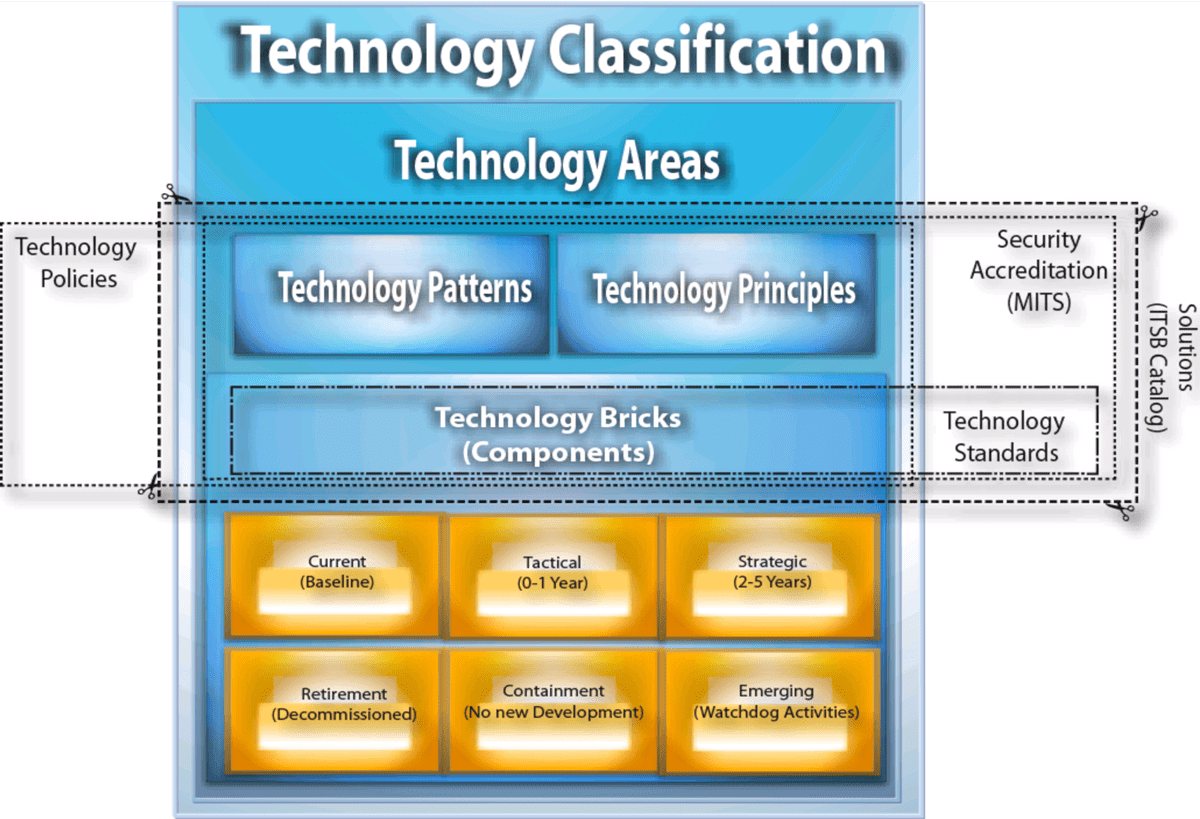Understanding how to align applications into an EA framework can be complex. Examination of any application landscape within an organization may reveal silos in which specific technologies were targeted to meet specific business requirements without considering the potential synergies across applications and solutions. This constraint limits the delivery channels open to the business; diminishing IT’s ability to meet the demands of the business. Subsequently, various IT projects are often initiated in silos without a proper vetting by an EA governance process to pin-point synergies and potential reuse across products and/or services.
One approach to address these concerns is to identify opportunities for cross-portfilio synergies through the formulation of an “Application Delivery Strategy”, which may involve numerous workshops, multiple interviews and reams of documentation to gain a better understanding of the real application landscape and the technology dependencies across lines of business. In most cases, the business needs can be categorized into business areas that can be mapped against technology domains to determine technology / service synergies. This work can then transition into a Technology Roadmap.
An Application Delivery Strategy which maps to a TRM empowers architects to pin-point technologies (components) leveraged by applications and to decompose those solutions into discrete services and integration points which have the potential to be shared across business domains. As illustrated in the enclosed video, a component of one application can be consumed by another – leveraging capabilities from a component or service. In this example, using a Canadian public-sector client (Company-X), applications not only cross lines of business, but also categories of technology.
The video presentation below proposes an approach for developing an Application Development Strategy which maps business areas to technology components by analyzing the relationships between the application and the capabilities across technology domains.
Many companies attempt to leverage traditional object oriented development; however this differs from Rapid Application Development (RAD) – which is fast becoming a style for custom development. In traditional object-oriented development, the problem analysis phase, also called inception, only studies the requirements of a single problem. On the other hand, RAD captures the requirements for multiple use-cases across multiple technology components. Furthermore, the final result of traditional object-oriented development is an executable application, whereas many applications and/or services can result from the instantiation phase by using a RAD approach.
The instantiation phase comprises the construction and transition phases of the traditional development. Thus, separate construction and transition phases are present in each of the phases of a RAD-oriented model. This further complicates the mapping as illustrated in this example.
For each application instance there is an implementation effort introduced by these phases which target existing services and components. Most analysts believe that RAD will evolve and prove itself the rule of thumb for many application types, but surely not for everything since there are so many options whereby solutions can either be acquired or adopted from broader open-source projects which leverage cloud-centric delivery methods and/or seat-based subscription models.
Bottom-line, understanding the relationship between applications and the technologies they consume will continue to be a driving force for determining business capabilities; however by developing an approach to identify technology dependencies and potential reuse allows architects to pin-point use cases for cloud adoption and RAD which will accelerate business to IT delivery capabilities. Developing an Application Delivery Strategy is a key component for developing a Technology Architecture Blueprint.

